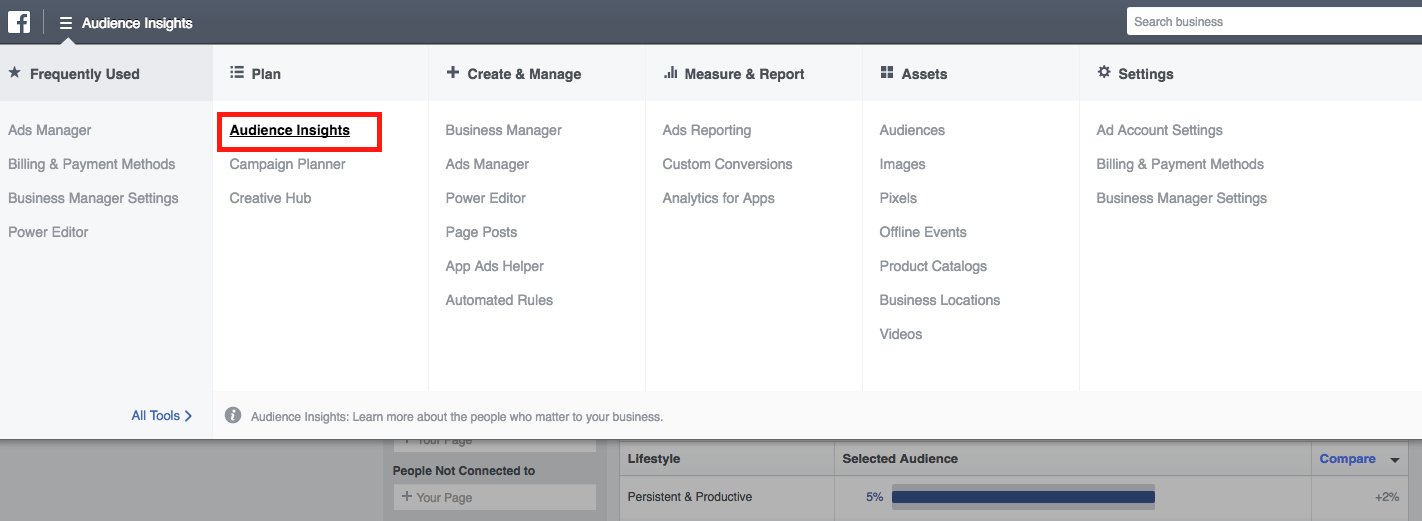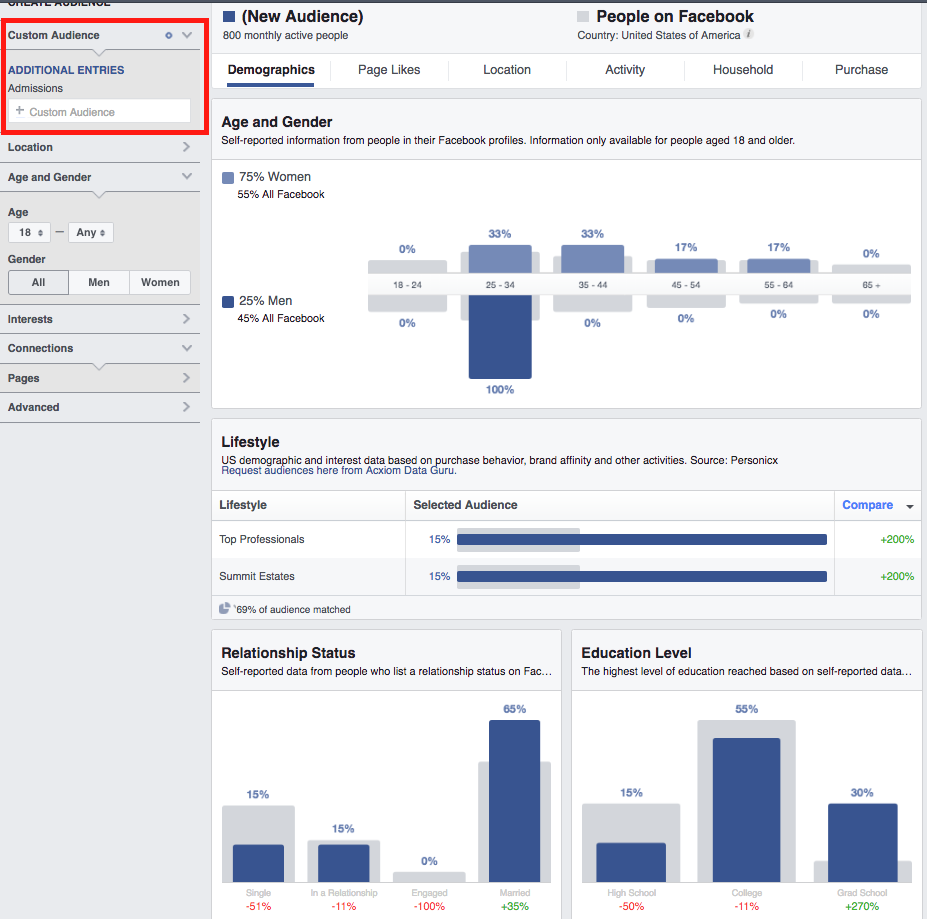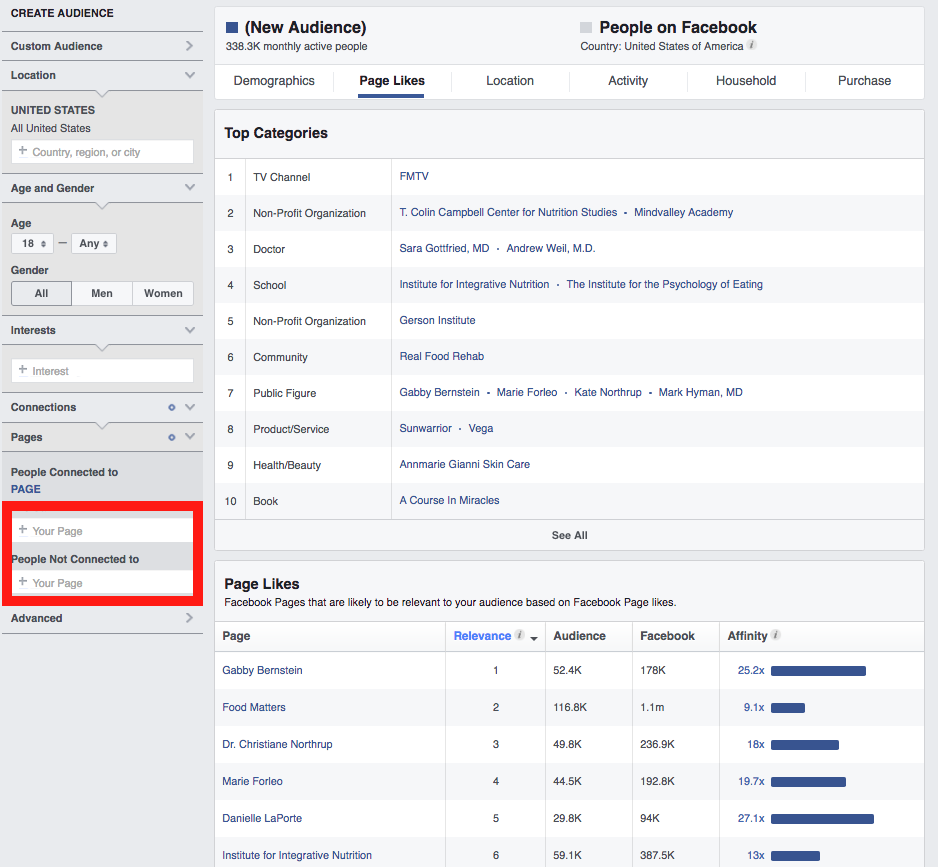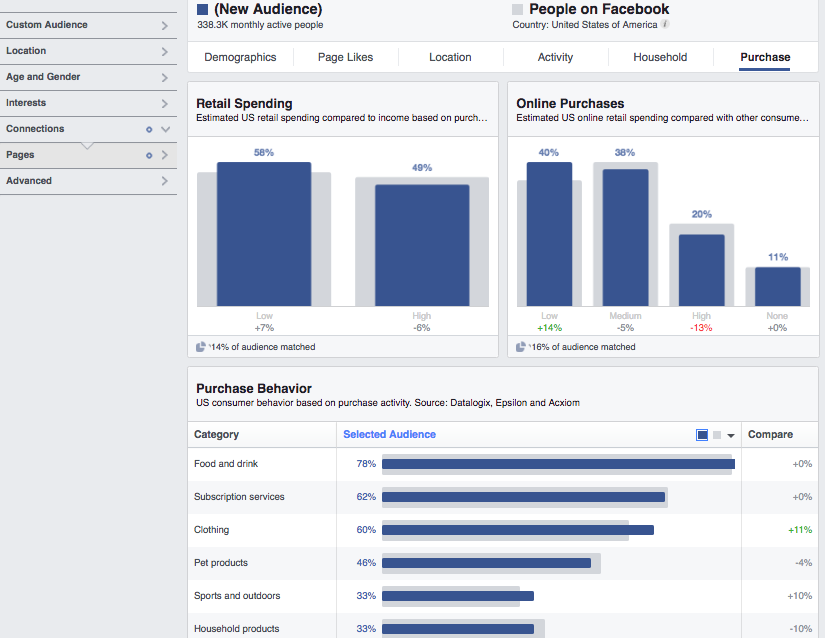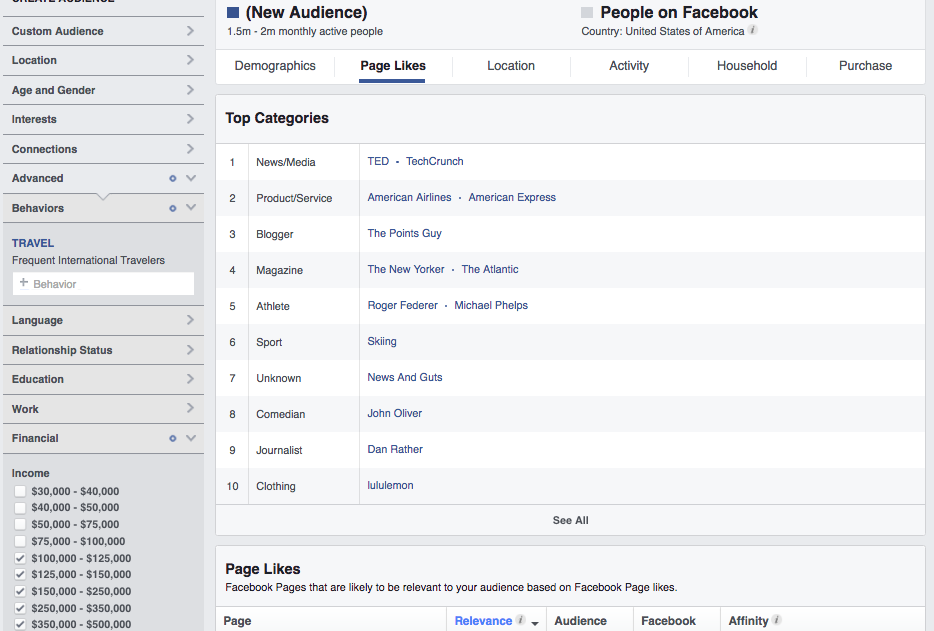May 21, 2024
Using Facebook Audience Insights
By Megalytic Staff - April 20, 2017

Accessing Audience Insights
You can gain access to your Audience Insights from the navigation bar within Facebook Business Manager. If you don’t have a Business Manager account setup, see Facebook’s guide to creating one.
Once you’re in, you can begin by creating an audience from three options: everyone on Facebook, people connected to your page, or a custom audience. A custom audience can include an uploaded email list, a segment of website visitors tracked via the Facebook pixel , or a lookalike audience (built by Facebook including similar interests to an existing audience).
Once you’ve chosen the type of audience to start with, you can further segment by a variety of criteria, pulled from both Facebook’s internal data and external data sources connected with user accounts. These categories include:
Gender
Age range
Interest
Page connections
Behavior
Language
Relationship status
Education
Work
Financial
Home
Market Segments
Parents
Politics
Life Events
The variables you choose will largely depend on what you’re looking to learn. From here we’ll delve into evaluating demographic data and the inferences that can be drawn.
Analyzing an Existing Audience
Facebook Audience Insights offers immense potential for learning about the existing people who are engaging with your brand, whether via Facebook, your website, or an email list. In the example below, we see demographic data for people who visited the Admissions page on a private school website. From this data, we can deduce that visitors researching admissions are most likely to be married female adults in the 25-44 age range with a college education.
Next, in the Page Likes section, you can see popular pages liked by people in your audience, as well as pages that are most likely to be relevant to your audience based on their interests. This data can help illuminate useful behavioral trait and inclinations. This information gives you a sense of what your audience is reading and watching, what causes they care about, and what brands they’re likely to interact with. From there, you can use that data to inform the content you’re presenting on social media. You can also take this knowledge a step further and apply it to content on your website, email marketing or even offline mediums.
In this example, we’re analyzing the people who like a healthy lifestyle brand’s page. From the data we can see that these individuals tend to like other brands in the realm of nutrition, healthy eating, etc. We could also use these likes to determine potential affiliate partners for cross-selling products.
Next, we’ll evaluate purchase habits of individuals who like the same page. In this section, you can view how heavily people are likely to spend in retail and online purchases. In addition, you can see purchase behavior by category.
For this brand, food and drink doesn’t particularly surprise as a top category, but also note that subscription services rank high. Based on this data, the brand would do well to target the audience to sign up for a subscription service, such as a diet plan.
The key to getting the most use from this Facebook feature is to identify the questions you are looking to answer. Once you do that, you’ll be able to begin making data-based decisions about everything from content to campaigns and brand messaging.
Analyzing Global Audiences
Besides looking deeply at your own lists, you can also segment categories of people based on the data parameters directly available in the interface. What pages are most liked by people in a fitness category? How likely are US-based female 18-24-year-olds to make credit card purchases? The platform can answer these and other questions.
Use the sidebar to select your initial criteria. Then get even more granular by overlaying multiple parameters. For instance, you can choose males 25-40 who like baseball, or people who like both comedy movies and fast food. In addition, note that the Advanced section opens access to many additional parameters, including those mentioned earlier in the article.
So how do you use this? Again, it depends largely on the questions you want answered and your ultimate goals. For example, say that you’re promoting a vacation planning site. You’re probably looking to target likely travelers with expendable income. For that, you’d choose to look at people with a “frequent international travelers” behavior and income of $100,000 more a year.
What you see here suggests that you should probably accept American Express for site purchases, as that is one of the top brands here. In addition, consider featuring your ski vacations, since skiing ranks as a popular activity liked by this audience. You can also see a few popular figures and websites that may be worth exploring for advertising options.
Limitations of Audience Insights
While Facebook Audience Insights provides immense data about the public, there are some potential limitations in considering the usability of this information. First, this data only represents individuals who have Facebook accounts. Of course, Facebook had almost 1.86 billion monthly users at the end of 2016, and (despite claims to the contrary) the vast majority of millennials still use Facebook . However, the data still misses individuals who either have not signed up for Facebook or aren’t actively liking pages and interacting. A Pew study cites that 8 in 10 online Americans use Facebook , meaning that this data potentially excludes 2 out of 10 people.
For analyzing people who like a page or are in a custom audience, it’s important to factor in that smaller lists will yield limited information. Some data, like page likes, may not show up for lower sample numbers.
Also, consider that the people who like your Facebook page may not be the same as those who could actually afford your products. For instance, a luxury car brand may attract teenagers who want to see photos of high-end cars but aren’t qualified to make a purchase. In this case, cross-referencing an email list of actual customers would provide better data. Despite these limitations, this section of Facebook still offers one of the more powerful (and free) methods of analyzing your audiences.
Conclusion
Facebook Audience Insights is intriguing, informative, and for us data nerds, a lot of fun. Start by investigating the habits around your existing Facebook page likes and move on to experimenting with custom audiences and broader defined audiences based on Facebook’s data. Use the data to gain a better understanding of the interests, inclinations, and aspirations of active Facebook users, people visiting your site, and people on your email lists. The more you know about what drives the people you target, the more you can create targeted marketing that drives results.

